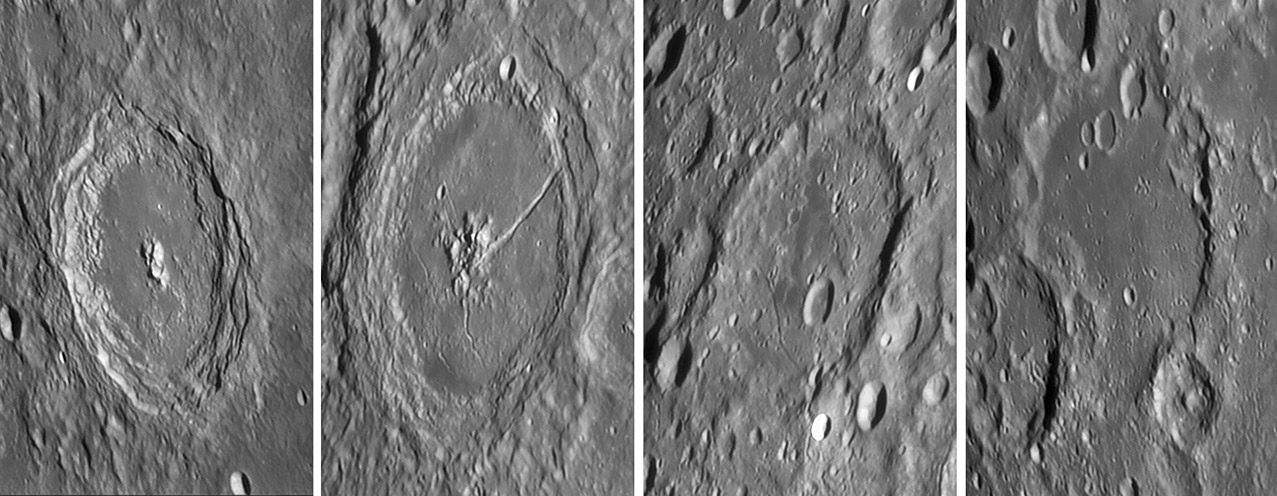
images by Stefan Lammel, Uxbridge, England
When newly formed, most lunar craters in a given size range look alike. Small craters are simple bowls, medium-size type. Apparently magma rose under the floor of the 177 km wide crater, uplifting its center causing the rille system and leaking out on the floor to construct a dome and pyroclastic deposits. Older still are Furnerius (125 km) and Vendelinus (147 km). I think Furnerius is slightly younger for the tip of its central peak is still visible and there are fewer large superposed craters than on Vendelinus. But both have been heavily battered and shakened to smooth out their terraces. Vendelinus’ floor is lava filled enought to bury the central peak.
Technical Details:
6 November, 2006; 23:58 UT. 10″ f4.8 Newtonian + 4x PowerMate + red filter, Registax v4, PSE 5, 1/60s, 600/5000 frames, MAP: 12×128; seven panel mosaic.
Related Links:
Rükl charts 49, 59, 60 & 69
To see image at full resolution visit Stefan’s website
Yesterday's LPOD: At the Edge of Certainty
Tomorrow's LPOD: A Really Tall Peak
COMMENTS?
Register, Log in, and join in the comments.



